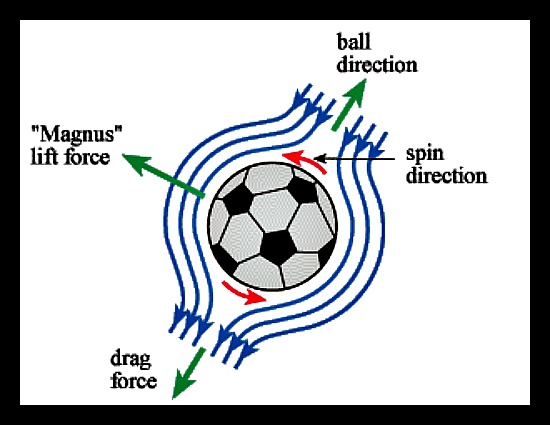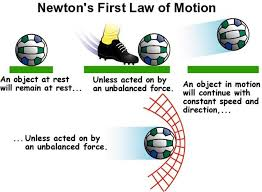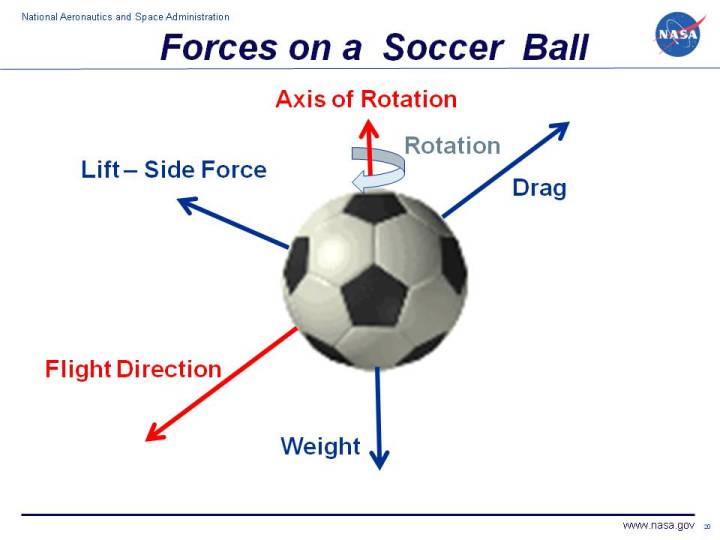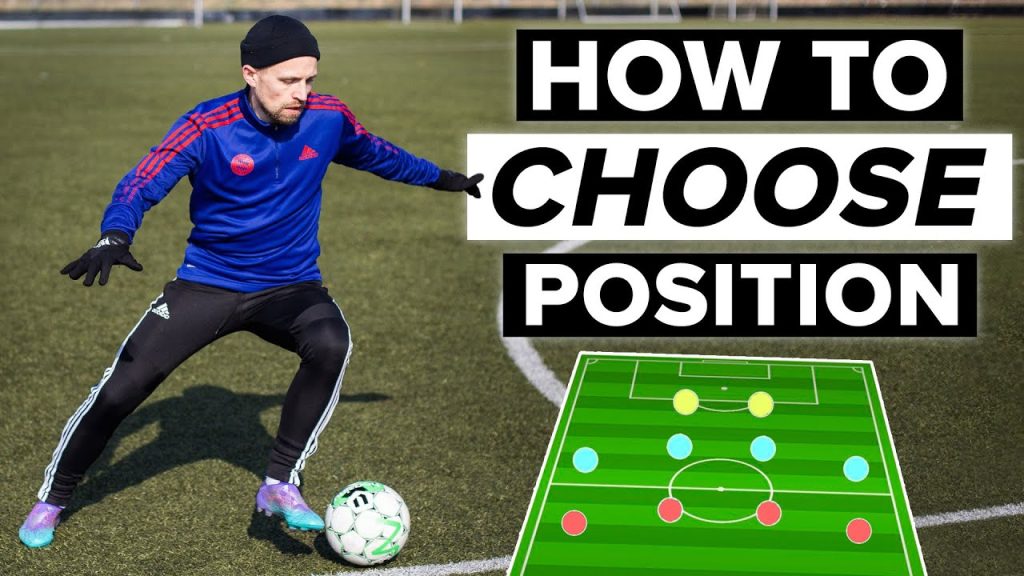A soccer ball relates to Newton’s 1st law through motion and forces. Newton’s 1st law states that an object remains at rest or in uniform motion unless acted upon by an external force.
Imagine a soccer ball resting on the field. It stays still until a player kicks it. This is Newton’s 1st law in action. The ball moves because of the force from the kick. On the other hand, once the ball is rolling, it keeps rolling until friction or another force stops it.
This law explains the basic principles of motion and how forces affect objects. In this blog, we will explore more about how a simple soccer ball demonstrates Newton’s 1st law in real life.
Newton’s 1st Law Basics
Newton’s 1st Law of Motion, also known as the Law of Inertia, explains how objects behave when forces are applied. This law states that an object at rest will stay at rest, and an object in motion will stay in motion, unless acted upon by a force. Understanding this law can help us see why a soccer ball behaves the way it does during a game.
Law Of Inertia
The Law of Inertia tells us that objects resist changes in their state of motion. A soccer ball will not move unless a player kicks it. Once the ball is kicked, it wants to keep moving in a straight line. This is because of its inertia.
Inertia depends on the mass of the object. A heavier ball has more inertia and is harder to move or stop. Lighter balls are easier to kick and change direction.
Motion And Rest
When a soccer ball is at rest on the field, it will stay there until a force moves it. This force could be a player’s foot or even the wind. Once in motion, the ball will continue to move until another force stops it. These forces include friction from the grass, the air, or a player’s foot blocking it.
For example, if you kick the ball, it will roll across the field. The friction between the ball and the grass will slow it down. Without these forces, the ball would keep moving forever. This is Newton’s 1st Law in action.
| State | Behavior |
|---|---|
| At Rest | Stays at rest |
| In Motion | Stays in motion |
| Force Applied | Changes state |

Credit: www.soccermaniak.com
Soccer Ball In Motion
A soccer ball in motion is a perfect example of Newton’s First Law of Motion. This law states that an object will remain at rest or in uniform motion unless acted upon by an external force. Let’s dive into how this law applies to a soccer ball during a game.
Initial Kick
The initial kick is the first force applied to the soccer ball. This force propels the ball into motion. The stronger the kick, the faster the ball moves. The direction of the kick also determines the ball’s path. Before the kick, the ball remains at rest on the field. This demonstrates Newton’s First Law: an object at rest stays at rest unless acted upon by an external force.
Constant Velocity
Once kicked, the soccer ball travels at a constant velocity. This means the ball moves in a straight line at a steady speed. This continues until another force acts on it. Forces like friction from the grass, air resistance, or a player’s foot. These forces can slow down or change the ball’s direction. Without these forces, the ball would continue moving indefinitely at the same speed and direction. This illustrates Newton’s First Law: an object in motion stays in motion unless acted upon by an external force.
| Force | Effect on Soccer Ball |
|---|---|
| Initial Kick | Sets the ball in motion |
| Friction | Slows down the ball |
| Air Resistance | Reduces speed |
| Player’s Foot | Changes direction or speed |
Understanding these concepts helps to appreciate the physics behind soccer. It also improves gameplay strategies. The next time you watch or play soccer, think about Newton’s First Law. Watch how forces interact with the ball, keeping it in motion or bringing it to rest.
Forces Acting On The Soccer Ball
The forces acting on a soccer ball play a crucial role in its movement. Understanding these forces can help explain how Newton’s First Law of Motion applies to a soccer ball. Newton’s First Law, also known as the law of inertia, states that an object will remain at rest or in uniform motion unless acted upon by an external force.
Gravity
Gravity is a force that pulls objects toward the center of the Earth. For a soccer ball, gravity pulls it down to the ground. This force ensures that the ball does not float in the air indefinitely. When a player kicks the ball, gravity affects its trajectory, bringing it back to the ground.
Air Resistance
Air resistance, also known as drag, is the force that opposes the motion of an object through the air. As the soccer ball moves, it collides with air molecules, creating resistance. This force slows down the ball, making it lose speed over time. The shape and surface of the soccer ball can influence how much air resistance it encounters.
Role Of Friction
Understanding the role of friction in soccer can help us relate it to Newton’s 1st Law. Newton’s 1st Law states that an object in motion stays in motion unless acted upon by an external force. Friction is one such force that affects the motion of a soccer ball.
Ground Friction
Ground friction is the force that opposes the motion of the soccer ball on the field. When the ball rolls, it meets resistance from the ground. This resistance slows it down gradually. Different surfaces affect the amount of friction. Grass creates more friction than artificial turf. Wet surfaces reduce friction, making the ball move faster. Understanding ground friction helps players control the ball better.
Deceleration
Deceleration is the reduction in speed of the soccer ball. Friction causes this deceleration. As the ball moves, it loses energy due to friction. The more friction, the quicker the ball slows down. This concept is crucial during a game. Players must kick the ball harder on rough surfaces to maintain speed. On smooth surfaces, they need less force. Knowing how friction affects deceleration can improve game strategy.
| Surface Type | Friction Level |
|---|---|
| Grass | High |
| Artificial Turf | Medium |
| Wet Surface | Low |
By understanding friction, players can make better decisions during a game. They can predict how the ball will move and plan their actions accordingly.
Impact Of External Forces
Understanding the impact of external forces on a soccer ball can help explain Newton’s First Law of Motion. This law states that an object will stay at rest or move in a straight line unless acted upon by an external force. In soccer, these forces come from players and the environment.
Player Interaction
Players kick the ball, applying force that changes its motion. A gentle tap makes the ball roll slowly. A strong kick sends it flying across the field. The ball’s speed and direction change based on the force and angle of the kick.
When a player passes the ball, they aim to control its path. The ball’s movement depends on the exact spot where the foot hits it. Even a slight miscalculation can alter the ball’s trajectory. Stopping the ball also involves force. Players use their feet or bodies to halt its motion. This action is a direct application of Newton’s First Law.
Environmental Factors
External forces also come from the environment. Wind is a major factor. A strong gust can push the ball off course. Players must adjust their kicks to counter wind direction and speed. Rain affects the ball’s motion too. A wet field makes the ball slide more. Players might need more force to move the ball effectively.
The type of surface impacts the ball’s movement. A grassy field slows the ball down. On a hard, artificial turf, the ball rolls faster. Temperature changes can also influence the ball. In cold weather, the ball may feel harder and less bouncy. In hot conditions, it might bounce more. Understanding these factors helps players make better decisions on the field.
Examples From Real Games
Soccer games provide excellent examples of Newton’s First Law. This law states that an object will stay at rest or in motion unless acted upon by an external force. Let’s explore how this applies to real soccer games.
Free Kicks
A free kick is a clear example of Newton’s First Law. The ball remains at rest until the player kicks it. The force of the kick sets the ball in motion. If no other force acts on it, the ball would continue to move in a straight line. But, in a real game, several forces act on the ball. Gravity pulls it down, air resistance slows it, and friction from the ground eventually stops it.
Passes And Dribbles
Passing and dribbling demonstrate Newton’s First Law in dynamic ways. When a player passes the ball, they apply a force to move it. The ball travels in the direction of the pass until another player intercepts it or it encounters friction. During dribbling, the player continuously applies force to keep the ball in motion. The ball would not move on its own; it requires the player’s kicks to maintain its motion.
Here are some key points:
- Passes: Force applied by the player determines the ball’s speed and direction.
- Dribbles: Continuous small kicks keep the ball moving.
- External Forces: Air resistance, gravity, and friction constantly affect the ball.
Understanding these examples helps to see Newton’s First Law in action during soccer games. It explains why the ball moves the way it does and what forces are at play.
Practical Demonstrations
Understanding Newton’s First Law through practical demonstrations can be fun and engaging. Let’s explore how a soccer ball can illustrate this fundamental law of motion. We’ll look at two main activities: Classroom Activities and Field Experiments.
Classroom Activities
In the classroom, you can use simple materials to show how Newton’s First Law applies to a soccer ball. Here are some ideas:
- Tabletop Soccer: Place a soccer ball on a smooth table. Gently push it and observe. Notice how it keeps moving until friction slows it down.
- Inclined Plane: Use a ramp to roll the ball. Discuss how the ball continues moving in a straight line until gravity or a surface stops it.
- Ball and String: Attach a string to the ball and swing it. Let go and see how the ball moves in a straight line until it hits an obstacle.
These activities help students see how objects at rest stay at rest, and objects in motion stay in motion, unless acted upon by a force.
Field Experiments
Take the learning outside with field experiments that illustrate Newton’s First Law in action. Here are a few ideas:
- Kick and Observe: Have students kick a soccer ball and watch how it moves. Discuss how it keeps going until friction with the ground slows it down.
- Obstacle Course: Set up cones or other obstacles. Roll the ball and see how it changes direction when it hits an obstacle, demonstrating how an external force affects its motion.
- Free Roll: On a flat surface, roll the ball and measure the distance it travels. Compare how different surfaces (grass, asphalt) affect the ball’s motion.
These field experiments provide a hands-on way for students to understand Newton’s First Law. They can see how a soccer ball’s motion changes with different forces and surfaces. This makes the law tangible and easier to grasp.

Credit: www.youtube.com

Credit: schooltutoring.com
Frequently Asked Questions
How Does Newton’s 1st Law Apply To A Soccer Ball?
Newton’s 1st Law states that an object will stay at rest or in motion unless acted upon by a force. In soccer, a ball remains stationary until kicked.
Why Does A Soccer Ball Stop Rolling?
A soccer ball stops rolling due to friction and air resistance acting against its motion. These forces cause the ball to gradually lose speed.
What Role Does Inertia Play In Soccer?
Inertia is the tendency of an object to resist changes in its motion. A soccer ball will continue moving in the same direction unless acted upon by another force.
How Does Kicking Affect A Soccer Ball’s Motion?
Kicking a soccer ball applies an external force, changing its speed and direction. This demonstrates Newton’s 1st Law of motion.
Conclusion
A soccer ball perfectly illustrates Newton’s 1st Law. It stays still until kicked. Once in motion, it keeps moving unless another force stops it. This simple action shows how forces affect objects. Understanding this law helps explain many daily activities.
So, next time you play soccer, remember Newton’s 1st Law. It’s science in action! This knowledge enhances your appreciation of the game. Stay curious and keep learning.


